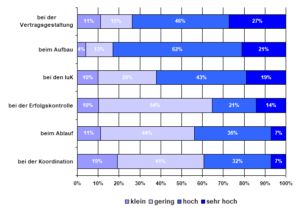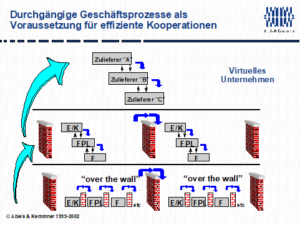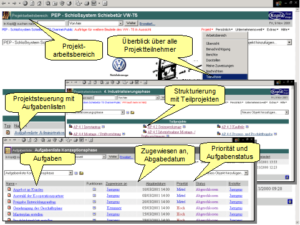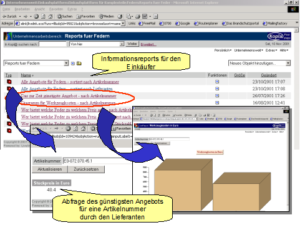Cooperation management in the SME sector
by Dr. Götz-Andreas Kemmner
The need for support from third parties is high to very high when setting up business collaborations. This was the assessment of 83% of SME decision-makers in a new cooperation study conducted by Abels & Kemmner. However, this realization is not put into practice. So there is a big gap between theoretical knowledge and practical implementation. Is there a lack of tangible solution models and offers?

In most cases, cooperations are only supported by lawyers when drafting contracts. Neutral consultants for e.g. process optimization, on the other hand, are only rarely consulted, although there is an increasing need for action today and in the future to optimize cross-company value chains. The increasing competition in supply chains will no longer allow individual companies to be selfish. It is therefore important to optimize performance across the entire value chain. This task is difficult to implement without a neutral third party. Anyone who is familiar with the power struggle between departments in their own company will immediately understand that optimization does not become any easier with cross-company interfaces. It is therefore advisable to use neutral third parties who are committed to all parties. As analysts, implementers, companions, mediators or ombudsmen, they are the ones who enable the successful development of a cooperation and optimize the business processes together with the companies involved. Just as every business cooperation is unique, the areas of responsibility of a neutral third party can be just as varied. In practice, we have mastered a wide variety of tasks:
- Selection and evaluation of potential cooperation partners
- Process optimization at the supplier on behalf of the customer
- Cross-company business process optimization
- Coordination of the implementation
- Ombudsman or mediator
- Optimization of the permanent flow of information and communication

Each task block places special demands on the neutral third party. In all cases, however, the external third party is the guarantor and accelerator of cross-company cooperation.
Survey: Do you know of any collaborations between your company, your suppliers or your customers that are either
- have not borne fruit or
- do not get out of the idea phase or
- are only reluctantly accepted by the employees?
If so, we would be grateful for a hint. We will try to get to the bottom of these failed or inadequate collaborations and intend to report on the sources of error uncovered in one of our next issues of Potentials. If you would like to take part in the survey, please send us a short reply by telephone, e-mail or reply card.
How to make a business cooperation a success

Successful cooperation requires more than just “working together”. Strategic considerations should therefore form the starting point for cooperation. The actual cooperation should then be tested on the basis of existing organizational processes and technical aids. If it turns out that cooperation between two or more companies on the market makes sense and a longer-term cooperation is expedient, processes and technical support must be designed more efficiently. On the organizational side, efficient cooperation between companies requires moving away from the idea of separate companies. In order to be able to work together efficiently, cross-company business processes must be defined that are designed as if the cooperation partners belonged to one company.
The aim is to coordinate business processes in such a way that duplication of work is avoided and information and material flows move back and forth between functional areas and across company boundaries as little as possible. As far as the material flow is concerned, this also requires a critical review and, if necessary, redistribution of the technical work steps to the cooperation partners.
Practice shows that it is easier to establish vertical cooperation than to develop horizontal cooperation. In vertical cooperations, the suppliers and customers in a value chain work together, while in horizontal cooperations, companies at the same level of the value chain work together. Behind every supplier integration or supplier partnership is a form of vertical cooperation. However, there are also vertical cooperations in which the customer-supplier relationships change from project to project; sometimes one partner is the customer, the others are suppliers, sometimes another company is the customer who brings in one or more other companies as suppliers for a project.

Since corporate cooperation usually involves collaboration between geographically dispersed parties and individuals, it is advantageous to simplify this collaboration with the help of a software tool. A software system should be selected that enables users to access the system via the Internet. In this way, all potential partners can be easily integrated without incurring major communication costs. Such tools are referred to, for example, as collaboration management tools, sometimes also as knowledge management tools. Groupware solutions, provided they have document management functionality, are also used in this area. Example requirements for such software tools can be seen in the graphic opposite.
Coordinating the project and distributing information via email alone has proven to be insufficient. Although each project partner can be provided with the latest information via e-mail, the individual data storage in the individual companies quickly leads to different information statuses of documents. In the medium term, there is no way around a central document repository that can be accessed by all partners. There is a wide range of software tools available on the market, all of which have different advantages and disadvantages and vary greatly in price. Which software solution is the right one depends on the individual situation of a cooperation. It is also possible to rent the required cooperation functionality in the form of an ASP solution. In this case, users access the software operated by a third party, typically via the Internet, and simply rent the use of the functionality. COVISINT, a cooperation platform initiated by the automobile manufacturers General Motors, Ford, DaimlerChrysler, Nissan and Renault, also represents such a far-reaching ASP solution. However, many companies still have reservations regarding the security of the data stored on the cooperation platform on the one hand and the security of their own locally stored data on the other. On the one hand, people mistrust the Internet – the keywords are hackers and viruses – and on the other, they fear that they will not be able to securely control access to data held externally – the keyword is industrial espionage.
The graphics show a very convenient solution example of a cooperation platform in which project coordination functions and purchasing functions for complex parts (drawing parts) are integrated in addition to document management.


